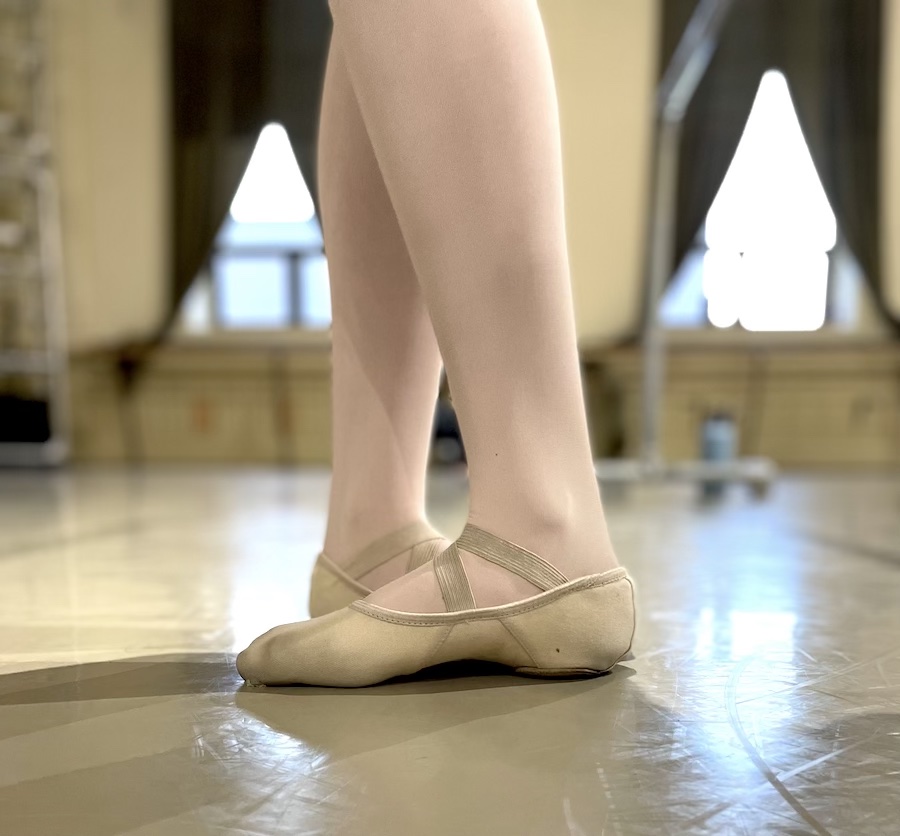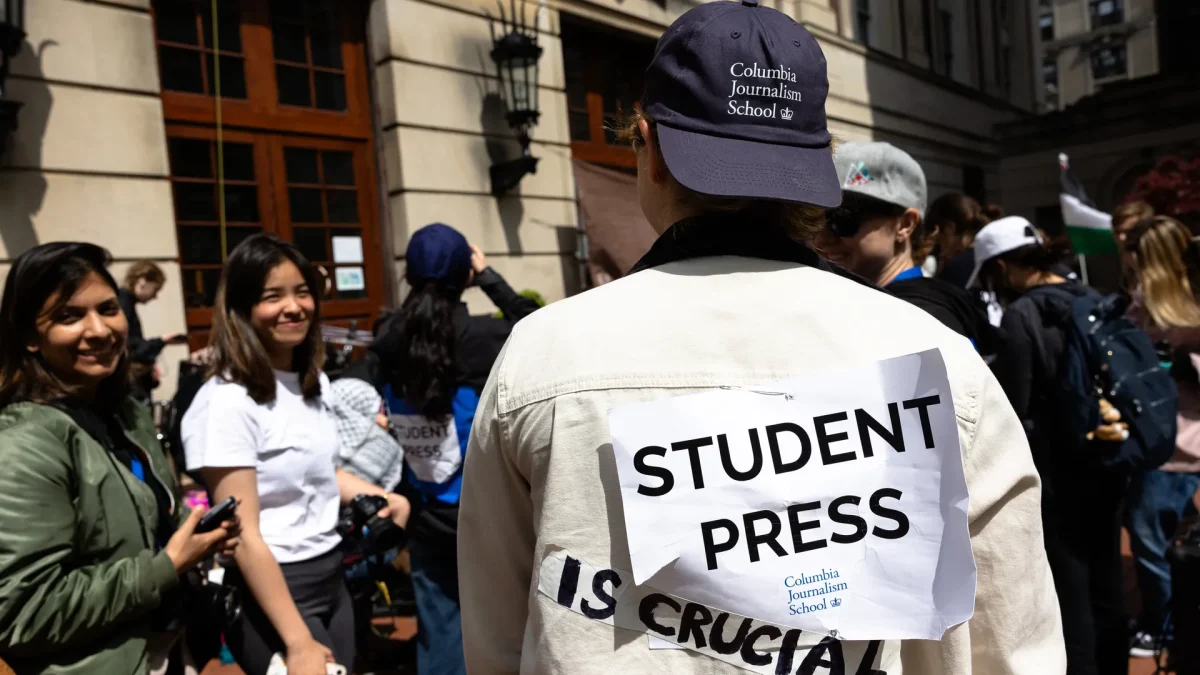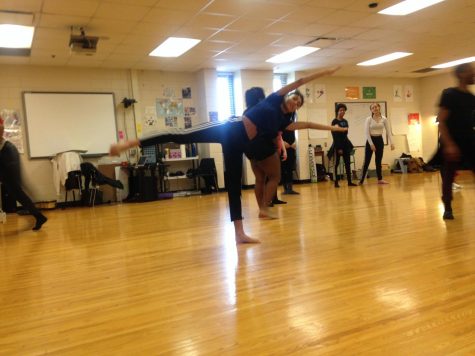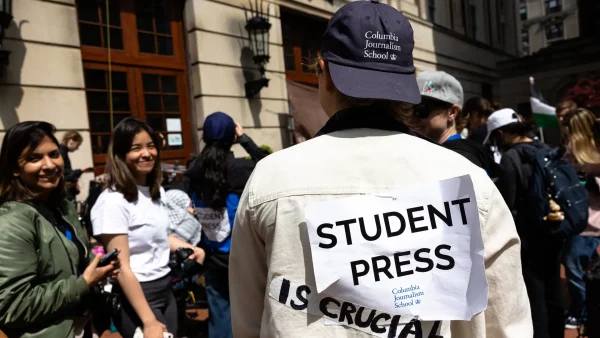Dance isn’t a sport, because it’s so much more
Dance is affected by sexism, capitalism and semantics but that doesn’t change the fact that dance is an art; an influential art that is unlike anything else. “The amount of time, effort and commitment you have to put in to be a good dancer [is overlooked]…Everyone has to work really, really hard to get where they are.”
November 25, 2022
In and out of athletic communities there is a heated debate about whether or not dance is a sport. Some people argue that because of the athletic abilities required to dance, it’s a sport, while others think that that’s not enough to consider it a sport. Oftentimes, the people who are for labeling dance a sport are trying to give credit to the work it takes to be a dancer (or are dancers themselves), and people who are against labeling dance as a sport, tend to be misogynists making fun of anything they deem as ‘feminine’.
I’m a dancer myself, and the more that I’ve danced the more strongly I’ve grown to feel that dance shouldn’t be considered a sport. Not because it’s unathletic, or because I agree with misogynists, but because I think dance should be considered an art before anything else, and when we sum dance up to scoring points and physical competition, we strip it of its immense value and importance as an art in our society.
Some people arguing that dance is a sport do so as a response to sexism. There is a belief that if we consider dance a sport, people will take it more seriously and respect dancers more. But I don’t think labeling dance a sport fixes the issue.Instead the focus should be on why people disrespect women, women’s athletics and art forms in the first place. Often women in athletics are considered less skilled or less talented than men in the same sport. Women’s sports don’t receive the same kind of funding, the same kind of fan base, and the same level of respect. Therefore, calling dance a sport won’t garner more respect for dance, because the problem is sexism not semantics. Society tends to trivialize the things women and girls care about; calling those activities frivolous, easy, self entitled, and unserious. Dance is heavily dominated by women and girls and, therefore, doesn’t get the credit it deserves. But trying to classify dance as a “sport” is not a productive use of energy.
Dance is first and foremost an art. Dance is about how a person can tell a story through their body. Something that can separate a good dancer from an amazing dance is their ability to engage with the artform beyond physical steps. Dance is about emotions, storytelling, and sending a message. Dance allows people to question things, get ideas, heal from past issues, and form communities. Like many art forms, dance requires you to give a lot of yourself. Not only do you have to give your whole body as you execute movements, but your full attention, full surrender of insecurities, and full creative bandwidth. In that sense, it can be a very powerful experience to dance as well as watch someone dance. Dance is an art; an influential art that is unlike anything else.
When someone is good at a sport, we can count and quantify exactly why that is. A good basketball player can score baskets and strategically make moves to avoid the other team scoring. A good football player can make touchdowns and pass the ball at incredible speeds and heights. But you can’t count and quantify how good a dancer is. You can’t win a dance. Sure, a good dancer could have strong physical abilities, but what makes them a good dancer is their performance. What makes them good is unspoken and completely about the presence they bring and the choices they make. A dancer could maybe not have great technique or insane abilities, but be incredible for inexplicable reasons. This is what makes dance an art. We measure its’ value and ‘‘goodness’’ based on how it makes us feel.
None of this is to say dance isn’t athletic, because it certainly is. In fact, the Occupational Information Network (O*NET) concluded that dance was the most physically demanding job in the U.S. Dancers train their entire lives to perfect their craft. It’s constant work that requires a lot of discipline and hours. Elle Mason, a junior at Southwest high school, who dances ballet says, “The amount of time, effort and commitment you have to put in to be a good dancer [is overlooked]…Everyone has to work really, really hard to get where they are.” Dance is not easy, and it certainly requires extreme physical effort, but this doesn’t erase the fact that dance would only be movement without art.
People who are interested in commodifying dance want dance to be quantifiable. Because we live in a capitalist society (which means our economic structure is controlled by private, for profit owners instead of the state), people are often trying to find ways to make money and profit off of everything, even art. However, it is not easy to make money from dance; dance is not a competition and, therefore, not able to be sold or counted like a sports game. In order to make money off of dance, you need dance to be a competition and to make it a competition, you have to quantify it based on technique, rules and sheer physical mastery. When we make dance more and more about physical abilities, we start to raise the bar unreasonably high for dancers. This creates stress and insecurity in mental and physical ways, which makes it easier for companies to sell competitions, courses, products and classes. Dance doesn’t need to be changed in order to make capital off of artists, we should let dancers dance without the heightened expectations of capitalism.
So how do we support dance as an art form rather than a profit-making competition? Mason said, “Professional dancers don’t make a lot of money. It’s a very hard career to have and still [be able to] live life… I feel like when a [dance] company comes in town, not a big variety of people go. It’s mostly the same audience, so I feel like if more people go to see the experience, they can see how hard [dancers] are working.” There are opportunities within South to support dancers; we have our very own South High dance program, which performs multiple times a year, and Project Success, a program that allows students and staff to access free tickets to dance shows.
Dance means more to me than I can put into words. It has allowed me to be in tune with my body and mind in ways that are extremely helpful and grounding. It’s brought me communities and friendships. It has allowed me to create works of art and engage with music. It’s taught me to know when to accept things the way they are, and when to never accept anything less than I deserve. Committing time to dance has allowed its’ layers to unfurl and give me a better understanding of my life and mind. It’s given me a confidence I didn’t know I was capable of having. The art of dance is valuable simply because, like all art forms, it is a way that we express ourselves and communicate what it means to be human.







![Jermartha Reese (9th) and Sabrina Lagos (10th) practice their hip-hop dance for the all-original dance and spoken word production on Thursday, November 19th. The free performance will start in the auditorium at 7:30pm. “I hope that [the audience likes] that we did something else and be inspired,” Ayala said.](https://www.shsoutherner.net/wp-content/uploads/2015/11/IMG_6143_2-475x317.jpg)

Incognito • Mar 20, 2024 at 9:10 pm
This has honestly opened my eyes to dancing. I haven’t thought much of it until now. I used to think of dancing as an exercise or as if it’s in its own category. But now as a look at how beautiful the dance of swan lake was. I highly agree with you.